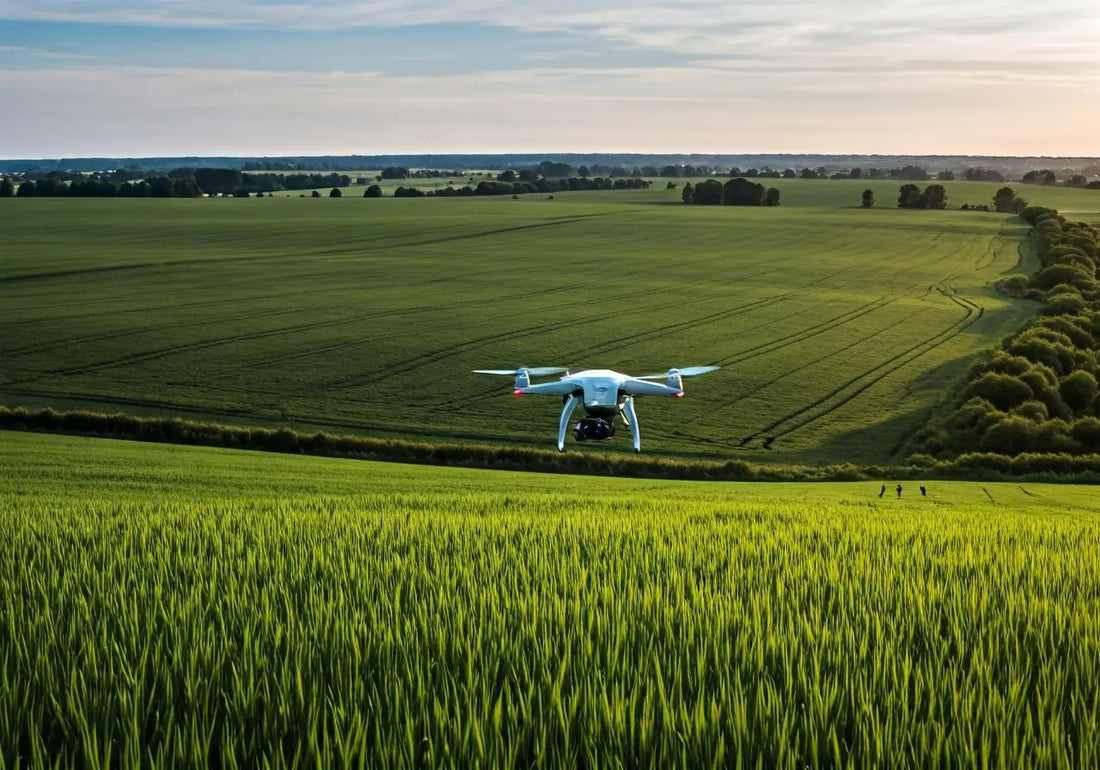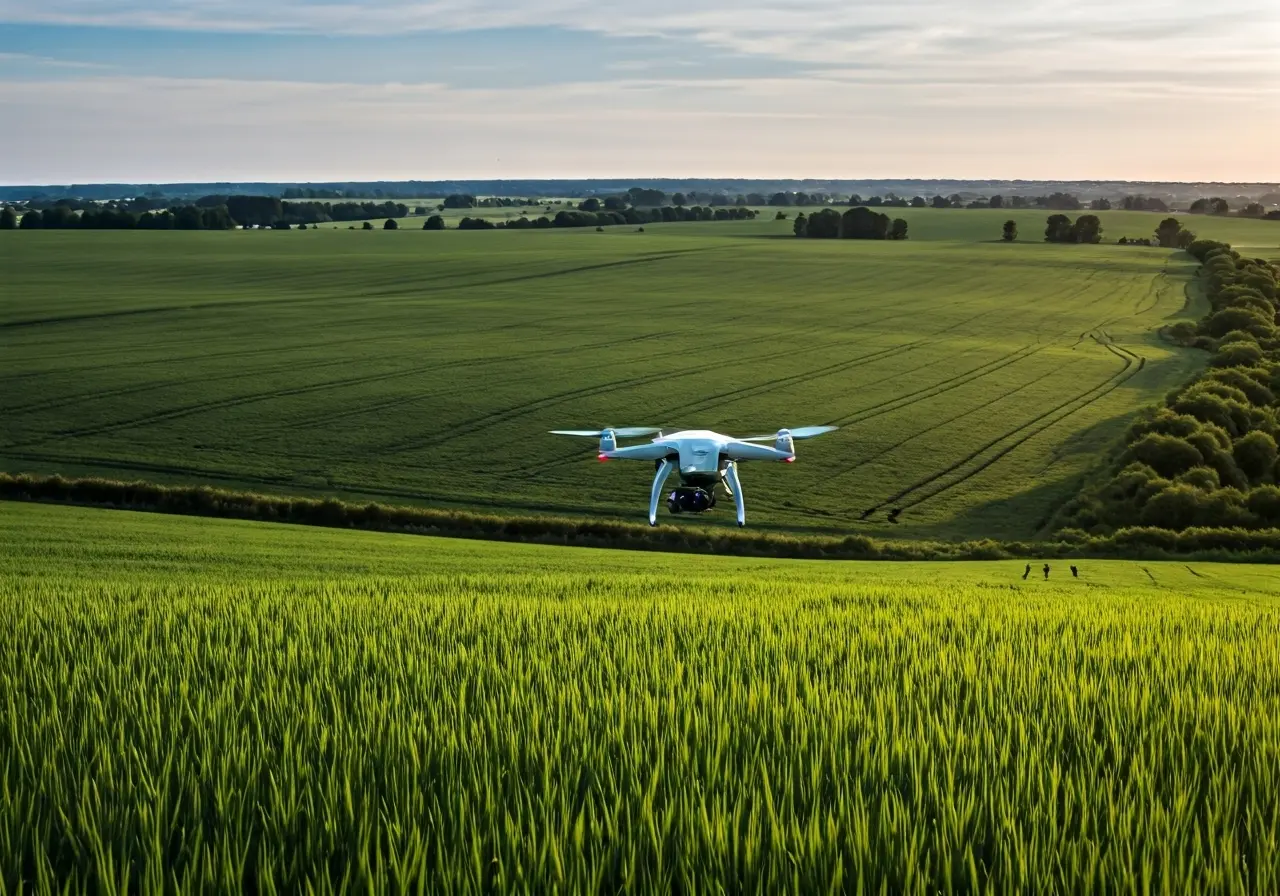
What Equipment is Essential for UAV Precision Agriculture?
Share
In the rapidly evolving field of agriculture, UAVs (Unmanned Aerial Vehicles) are becoming indispensable tools for precision farming. They offer farmers the ability to monitor crops with unprecedented detail and efficiency. If you’re considering integrating UAVs into your agricultural practices, understanding the essential equipment is crucial. In this guide, we’ll break down what you need to get started.
Understanding UAV Types and Platform
Choosing the right type of UAV is a critical first step. Fixed-wing drones and multi-rotor drones are suited for different agricultural tasks, such as surveying large areas versus precise hovering. Each type has its unique benefits, with fixed-wing drones generally offering longer flight times and multi-rotor drones providing versatile maneuverability.
Fixed-wing UAVs are particularly advantageous for covering extensive regions like large farmlands. Due to their airplane-like design, they can cover more ground while consuming less battery life. For tasks that require a more detailed examination of a specific plot, multi-rotor drones excel with their stability and precision hovering.
The selection between these types should be guided by your specific agricultural requirements. If your goal includes high-resolution imaging and precise application of fertilizers or pesticides, a multi-rotor drone may be beneficial. Meanwhile, fixed-wing drones are ideal for mapping and data collection over expansive areas.
Essential Sensors for Data Collection
Sensors are what make UAVs indispensable in precision agriculture. Among the most important are multispectral, thermal, and RGB sensors. These tools give farmers the ability to gather comprehensive data about crop health, soil conditions, and water stress levels.
Multispectral sensors are particularly useful as they allow for the analysis of crops beyond what the human eye can see. By capturing data across different wavelengths, they help in monitoring plant health, growth stages, and even detecting pests or diseases early.
Thermal sensors, on the other hand, provide insights into water use and stress. They enable farmers to optimize irrigation strategies by visualizing variations in plant and soil temperature. This capability is crucial for enhancing water efficiency and reducing costs.
Importance of High-Quality Cameras
High-resolution cameras are a must-have for detailed crop surveillance. These cameras capture timely and precise imagery that helps in assessing plant health, identifying weed invasions, and monitoring the overall condition of farmland.
With high-quality imagery, farmers can pinpoint crop stress or nutrient deficiency at an early stage. This kind of detailed observation is crucial for taking corrective actions such as adjusting fertilizer application, which can lead to increased yields and better crop quality.
Moreover, integrating cameras capable of capturing both visible and near-infrared imagery allows you to perform tasks like NDVI (Normalized Difference Vegetation Index) analysis. This technique assesses the health and vigor of crops with remarkable accuracy.
Reliable Ground Control Systems
A ground control station is vital for managing UAV operations. It acts as the command center, enabling real-time monitoring of drone flights and data management. A robust system captures flight logs, coordinates data collection, and allows for seamless integration with other farm management systems.
When selecting a ground control system, consider its compatibility with your UAV and sensors. Look for systems that offer intuitive interfaces, multiple channel display, and flexibility in adjusting flight parameters. Such features ensure you have reliable control over your UAVs, enhancing operational efficiency.
Having a reliable ground control platform also simplifies data logging and transfer processes, allowing you to focus on analysis and decision-making rather than technical troubleshooting. This efficiency is crucial for maximizing the benefits of UAV investments in your agricultural practices.
Software for Data Analysis and Interpretation
The gathered data is only useful if it’s analyzed correctly. Specialized software solutions translate raw UAV data into actionable insights. These insights help in making informed decisions regarding crop management, field accessibility, and input optimization.
Advanced software tools offer features such as 3D mapping and geospatial analysis, which add dimensions to your agricultural data beyond basic aerial observation. Such tools facilitate zoning for irrigation, fertilizer application, and even yield prediction based on historical data comparisons.
If you’re new to data analysis, seek out user-friendly platforms that provide comprehensive post-processing tutorials and support. Efficient data interpretation leads to more strategic planning, and ultimately, improved crop performance and profitability.
Ready to Elevate Your Farming with UAVs?
Incorporating UAVs into precision agriculture not only enhances your farming operations but also gives you a competitive edge in the modern agricultural landscape. By equipping yourself with the right UAV technology, software, and sensors, you’ll be able to optimize crop monitoring, ensure effective land management, and ultimately, boost your overall productivity. To explore how our cutting-edge solutions can transform your agricultural practices, visit our homepage.

